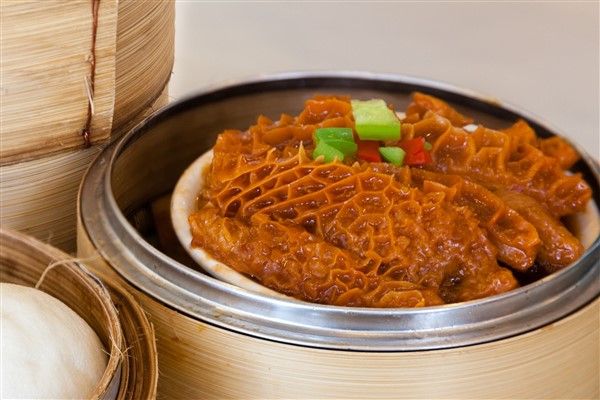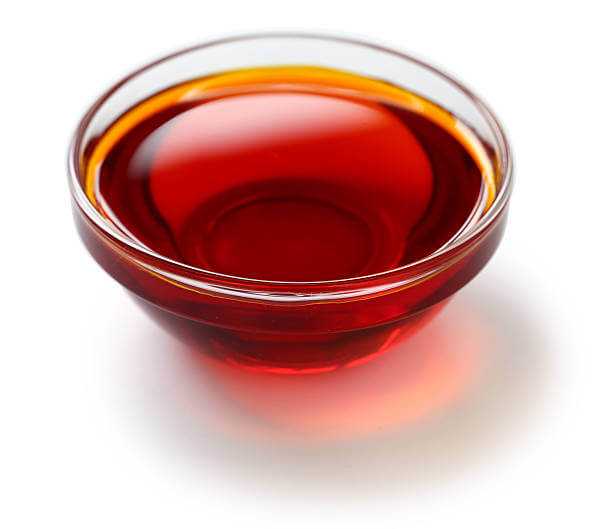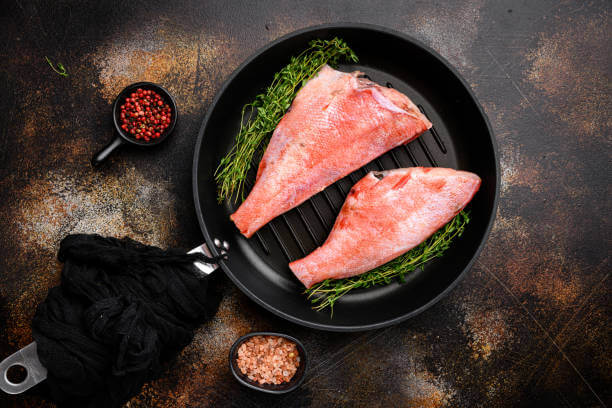
Among many culinary jewels lies beef tripe, a humble yet captivating organ meat that has been cherished by cultures around the globe for centuries. Here we’ll take you into through the art of cooking beef tripe, to unlock a symphony of tastes..
What is Tripe?
Tripe refers to the edible lining of the stomach of various animals, usually cattle or sheep. It is considered an organ meat and is commonly consumed in many cultures around the world.
There are several types of tripe, each coming from a different section of the stomach and having its own unique characteristics:
- Blanket Tripe (Smooth Tripe): This is the first stomach chamber, which has a smooth texture. It is often used in dishes like soups, stews, and curries.
- Honeycomb Tripe: This type comes from the second stomach chamber and has a distinctive honeycomb-like texture. It is often used in hearty soups, stews, and pasta dishes.
- Book Tripe: Book tripe comes from the third stomach chamber and has a smoother texture compared to honeycomb tripe. It is commonly used in Italian cuisine for dishes like trippa alla fiorentina.
What does Tripe Taste Like?

Tripe has a unique taste and texture that can be difficult to describe, but it is often characterized by its mild flavor and slightly chewy, gelatinous texture when cooked properly.
Health Benefits of Tripe
Tripe offers several potential health benefits when included as part of a balanced diet. While some of these benefits are anecdotal and might vary depending on the type of tripe and how it’s prepared, here are some potential health advantages:
- Rich in Protein: Tripe is a good source of high-quality protein, which is essential for muscle growth, repair, and overall body function. Protein helps maintain healthy skin, coat, and nails in dogs and supports muscle development in humans.
- Vitamins and Minerals: Tripe contains essential vitamins and minerals, including vitamin B12, zinc, iron, phosphorus, and selenium. These nutrients play vital roles in maintaining various bodily functions, such as immune system health, blood cell formation, and energy metabolism.
- Collagen Content: Tripe is rich in collagen, a protein that supports joint health, skin elasticity, and connective tissues. Consuming collagen-rich foods like tripe may contribute to joint comfort and overall mobility.
- Digestive Health: Tripe contains natural enzymes and probiotics that can aid in digestion and support gut health. It may be especially beneficial for dogs with sensitive stomachs or digestive issues.
- Omega-3 Fatty Acids: Green tripe (unprocessed tripe) is a source of omega-3 fatty acids, which have anti-inflammatory properties and may benefit skin health, coat quality, and joint function in dogs and humans.
- Low Fat Content: Depending on how it’s prepared, tripe can be relatively low in fat. For those seeking to manage their fat intake, tripe can be a leaner option compared to other cuts of meat.
- Caloric Density: For dogs, tripe can provide a relatively lower-calorie protein source, which can be beneficial for weight management and portion control.
- Amino Acids: Tripe contains essential and non-essential amino acids that contribute to overall health. Amino acids are the building blocks of proteins and play roles in various bodily functions.
How to select Fresh Tripe
Selecting fresh tripe is an important step in ensuring the quality and taste of your dishes. Here’s a guide on how to choose fresh tripe:
- Appearance: Fresh tripe should have a clean, pale, and creamy-white color. Avoid tripe that appears discolored, yellowish, or has dark spots.
- Texture: Choose tripe that has a smooth, slightly elastic texture. It should feel firm but flexible when touched. Avoid tripe that is overly stiff or slimy.
- Odor: Fresh tripe should have a mild, slightly sweet smell. Avoid tripe with a strong, unpleasant odor, which could indicate spoilage.
- Thickness: Depending on your recipe, you might prefer thicker or thinner tripe. Choose tripe that suits your cooking method and preferences.
- Avoid Freezer Burn: If purchasing frozen tripe, make sure there is no freezer burn on the packaging, as this can affect the quality of the meat.
How to Clean and Cook Tripe

Preparing tripe involves several steps to ensure that it’s cleaned, tenderized, and ready to be used in various dishes. Here’s a general guide on how to prepare tripe:
Ingredients
- Fresh beef tripe
- Water
- Vinegar
- Salt
- Aromatics (such as onions, garlic, bay leaves, and peppercorns)
Equipment
- Cutting board
- Knife
- Large pot or pressure cooker
- Strainer or colander
Instructions
Cleaning
Rinse the tripe under cold water to remove any surface dirt or impurities. Use a knife to gently scrape off any excess fat or particles from the surface. Prepare a mixture of water and vinegar (1:1 ratio) in a large bowl or basin. Submerge the tripe in the water-vinegar mixture and let it soak for about 30 minutes. This helps to remove any strong odors. After soaking, rinse the tripe again under cold water to remove the vinegar solution.
Blanching
Bring a large pot of water to a boil. Add the tripe to the boiling water and blanch it for about 3-5 minutes. This step helps to further clean the tripe and prepare it for cooking. Use tongs to remove the tripe from the boiling water and transfer it to a strainer or colander. Rinse the tripe under cold water to stop the cooking process.
Tenderizing
Cut the blanched tripe into the desired size and shape for your recipe using a sharp knife. Place the tripe pieces in a large pot or pressure cooker. Add enough water to cover the tripe, along with some salt and aromatics (such as onions, garlic, bay leaves, and peppercorns) for flavor. If using a regular pot, bring the water to a boil and then reduce the heat to a simmer. Cover the pot and cook for 1-2 hours, or until the tripe is tender and can be pierced easily with a fork. If using a pressure cooker, follow the manufacturer’s instructions for cooking tripe. Generally, pressure cook for about 20-30 minutes.
Cooling and Storing
Once the tripe is tender, turn off the heat and let it cool in the cooking liquid. Once cool, you can use the prepared tripe immediately in your chosen recipe, or you can store it in an airtight container in the refrigerator for a few days.
Tips for Cooking Tripe
Cooking tripe can be a rewarding culinary adventure, but it does require some special considerations due to its unique texture and flavor. Here are some tips to help you achieve the best results when cooking tripe:
- Proper Cleaning: Thoroughly clean and prepare the tripe by following the steps outlined. Proper cleaning helps remove any impurities and undesirable odors.
- Choose the Right Type: Different types of tripe have varying textures and characteristics. Consider the type of tripe (honeycomb, blanket, etc.) that works best for your chosen recipe.
- Tenderizing Techniques: Tripe needs to be cooked until it becomes tender. This can take varying amounts of time depending on the type of tripe and the cooking method. Be patient and taste-test for tenderness.
- Flavor Infusion: Use aromatics like onions, garlic, bay leaves, and peppercorns during cooking to enhance the flavor of the tripe.
- Cooking Methods: Tripe is often stewed with vegetables and seasonings to create rich and flavorful dishes.
Tripe Recipes

Here are a few tripe recipes that you can try out:
- Tripe Stew (Menudo – Mexican Style): Ingredients:
- 1 lb beef tripe (cleaned and cooked)
- 1 onion (chopped)
- 3 cloves garlic (minced)
- 1 can hominy (drained and rinsed)
- 2-3 dried guajillo chilies (soaked, seeded, and chopped)
- 1 can diced tomatoes
- 4 cups beef broth
- 1 teaspoon dried oregano
- Salt and pepper to taste
- Fresh cilantro (for garnish)
- Lime wedges (for serving)
Instructions:
- In a large pot, sauté onions and garlic until fragrant. Add chopped guajillo chilies and oregano, and cook for another minute.
- Add cooked tripe and diced tomatoes to the pot. Pour in beef broth and bring to a simmer.
- Let the stew simmer for about 1-2 hours until the flavors meld and the tripe is tender.
- Add hominy and cook for an additional 15-20 minutes.
- Season with salt and pepper to taste.
- Serve the stew hot, garnished with fresh cilantro and lime wedges. You can also serve with tortillas or rice.
- Tripe Curry (Indian Style): Ingredients:
- 1 lb beef tripe (cleaned and cooked)
- 1 onion (chopped)
- 2 tomatoes (chopped)
- 2-3 green chilies (sliced)
- 1 teaspoon ginger paste
- 1 teaspoon garlic paste
- 1 teaspoon ground coriander
- 1 teaspoon ground cumin
- 1/2 teaspoon turmeric powder
- 1/2 teaspoon chili powder
- 1/2 teaspoon garam masala
- Salt to taste
- Fresh cilantro (for garnish)
- Cooking oil
Instructions:
- In a large pan, heat oil and sauté chopped onions until golden brown.
- Add ginger and garlic paste, and sauté for another minute.
- Add chopped tomatoes and green chilies. Cook until the tomatoes soften.
- Add ground coriander, cumin, turmeric, chili powder, and salt. Cook the spices until fragrant.
- Add cooked tripe and mix well to coat with the spice mixture.
- Pour in enough water to cover the tripe. Cover the pan and let it simmer until the tripe becomes tender and absorbs the flavors (about 45-60 minutes).
- Stir in garam masala and cook for a few more minutes.
- Garnish with fresh cilantro and serve the tripe curry with steamed rice or naan bread.
- Crispy Fried Tripe (Asian Style): Ingredients:
- 1 lb beef tripe (cleaned and cooked)
- 1 cup all-purpose flour
- 1 teaspoon garlic powder
- Salt and pepper to taste
- Cooking oil for frying
- Dipping sauce (soy sauce, vinegar, and chili flakes)
Instructions:
- Cut cooked tripe into bite-sized pieces.
- In a bowl, mix flour, garlic powder, salt, and pepper.
- Coat each tripe piece with the flour mixture.
- Heat oil in a deep pan or fryer to 350°F (175°C).
- Fry the coated tripe pieces until golden and crispy (about 3-4 minutes). Fry in batches to avoid overcrowding.
- Remove the fried tripe with a slotted spoon and drain on paper towels.
- Serve the crispy fried tripe with a dipping sauce made from soy sauce, vinegar, and chili flakes.
Frequently Asked Question (FAQ)
Is Tripe good for Dogs?
Yes, tripe can be a nutritious and beneficial addition to a dog’s diet. Tripe is a good source of essential nutrients, including protein, vitamins, and minerals. Many pet owners and experts consider tripe to be a healthy and valuable food option for dogs.
What Can You Serve Tripe With?
Here are some ideas for what you can serve with tripe:
- Rice: Tripe stews, curries, and braised dishes can be served over cooked rice. The rice helps absorb the flavorful sauces and provides a nice base for the dish.
- Bread: Crusty bread or baguette can be used to mop up rich sauces or gravies from tripe dishes.
- Tortillas: Serve tripe fillings with warm tortillas for making tacos, burritos, or wraps.
- Pasta: Tripe can be added to pasta dishes like spaghetti or penne, along with tomato-based or creamy sauces.
- Potatoes: Mashed potatoes, roasted potatoes, or potato wedges can complement the flavors and textures of certain tripe recipes.
- Vegetables: Steamed or sautéed vegetables, such as spinach, broccoli, or bell peppers, can provide a nutritious and colorful side dish.
Where to Buy Tripe near Me?
You can get tripe at your local butchers shop or at your supermarket. If you’re in the UK and want to order tripe online why not try our African Grocery Store?
Conclusion
Just as chefs and home cooks alike have ventured into the art of preparing tripe, we encourage you to embark on your own tripe-cooking odyssey. With each simmer, sauté, and bite, we celebrate the triumphs of transforming an often-overlooked ingredient into a dish worthy of appreciation.






Leave a comment